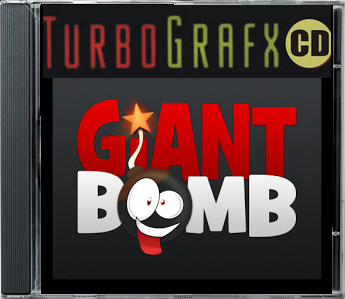
A few weeks ago, I unveiled the results of a month-long crusade to bring everyone the Turbo-y goodness of the maligned TurboGrafx-16's library via a comprehensive induction into our own Wiki. Following it today is its CD sister console, the TurboGrafx-CD, and the rest of the US releases for this short-lived system. Of course, it was only short-lived in the US where it failed to make much of an impact; in Japan, as the PC Engine, it was hugely popular and trendsetting besides. I guess you could say it's the 16-bit console equivalent of Monster Hunter.
Speaking of laborious repetitive exercises with little to show for it, I shall now present the forty-five (plus five extra) TurboGrafx-CD games I didn't so much add to the wiki myself but helped to spruce up to a satisfactory degree of polish. Similar to before, many of these will have been covered in-depth with a previous feature of mine, Octurbo-CD, but I'll be sure to summarize them all.
1989
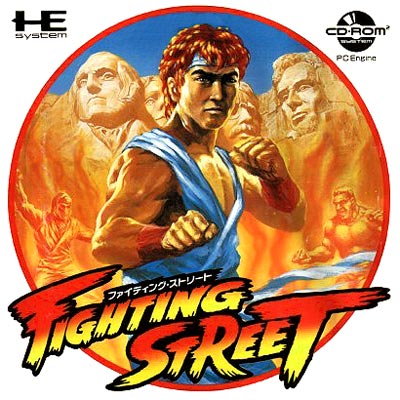 | Fighting Street: Hey, you kids like all the Street Fighters, right? Did you know that this sub-par port of an already sub-par Arcade fighter was the first CD game ever made? Well, along with No-Ri-Ko, but that's for an eventual PC Engine CD Wiki Project (and given there's almost 400 PCE-CD games, don't hold your breath). These days the original Street Fighter, before it got its sequel numeral and a whole lot better in the process, is pretty much a curio for the truly dedicated SF fan. I probably wouldn't recommend anyone else play it. (PC Engine Release: 12/04/88.) |
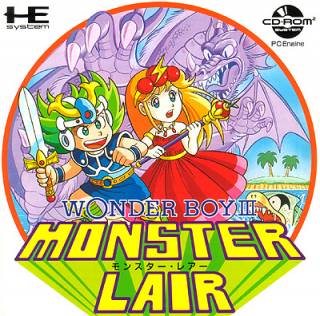 | Monster Lair (PCE: Wonder Boy III: Monster Lair): Hudson continued their streak of adapting Westone's Wonder Boy series for non-Sega consoles, often having to drop the "Wonder Boy" name completely. The history of Wonder Boy has been thoroughly delineated on its franchise page, but regardless to say it's a mess of weird license issues. Monster Lair is probably better known as a Genesis game, but this version isn't too bad. It has some jazzy redbook audio, for one. (PC Engine Release: 08/31/89.) |
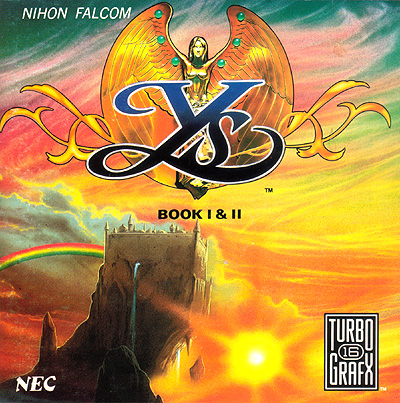 | Ys Book I & II (PCE: Ys I & II): Ys Book I & II is a compilation of the first two Ys games, which are often bundled together because they're individually very short. Ys is, for those not in the know, Falcom's take on a top-down Zelda-ish RPG and one of the longest running RPG series in video game history - almost 30 years, the same as Final Fantasy. These early Ys games used a weird diagonal collision mechanic for attacking enemies, similar to Hydlide's. You can currently buy the enhanced PC version of this duo on Steam for a handful of change, so why you'd want to play this version is anyone's guess. (PC Engine Release: 12/21/89.) |
1990
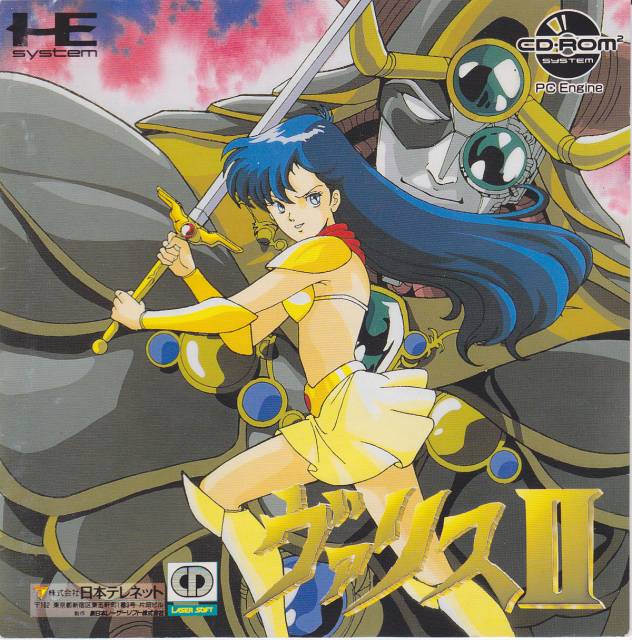 | Valis II: Nippon Telenet is the company responsible for a great many of these early CD games, having set up a division (Laser Soft) especially for the burgeoning format. Telenet's best known franchise, at least in the West, is the Valis series, featuring a regular schoolgirl who is spirited away to another dimension to be their armored-bikini-clad chosen one. Laser Soft makes full use of the CD format with Valis II, incorporating numerous anime cutscenes for its TG-CD release. Covered in Octurbo-CD. (PC Engine Release: 06/23/89.) |
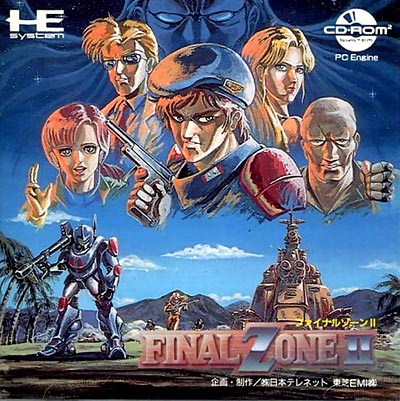 | Final Zone II: A top-down "New Age Power-Suit" Commando-style shooter and the sequel to a semi-obscure MSX/PC-88 game that had a far more elaborate story than most shooters of the 1980s, which generally involved a scant few lines about rebels, jungles and kidnapped Presidents. Wolf Team handled this one, back when they were a subsidiary of Telenet Japan and before their Tales RPGs launched them into the stratosphere. It's another case of a standard 16-bit action game series being imbued with anime cutscenes and redbook audio for its CD debut. We'll be seeing a lot of those. (PC Engine Release: 03/23/90.) |
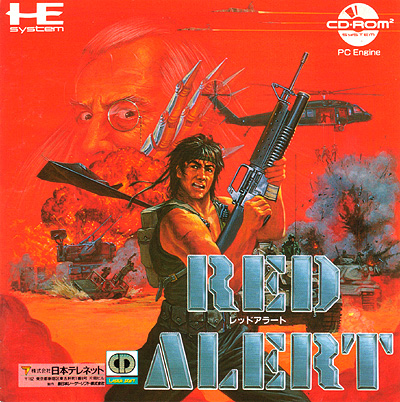 | Last Alert (PCE: Red Alert): Speaking of rebels, jungles and kidnapped Presidents, Last Alert is as generic as top-down third-person shooters come. It's elevated, if that's even the right word, by its over-the-top anime cutscenes and atrocious voice-acting, during a period when games were regularly getting sub-par localizations from indifferent translators already. That Western localization teams were suddenly required to hire voice actors for their work is why a lot of these early CD games sound so... well, comically bad. Covered in Octurbo-CD, but I'd also recommend the Retsupurae LP of it to hear it in action. (PC Engine Release: 12/28/89.) |
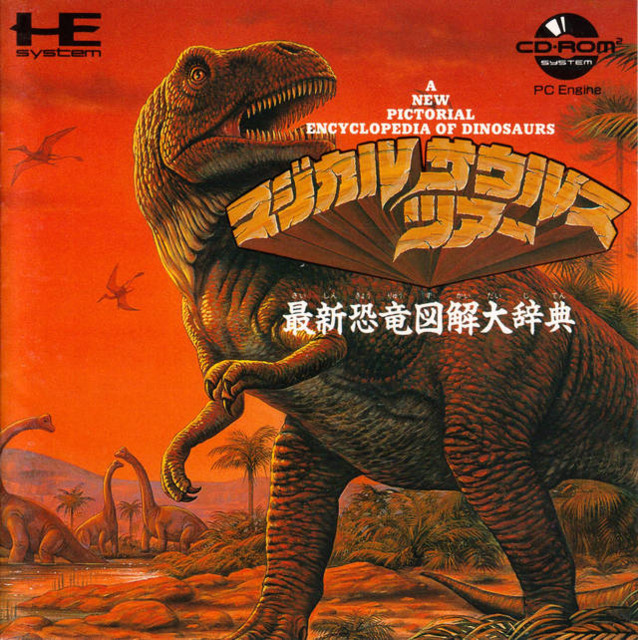 | Magical Dinosaur Tour (PCE: Magical Saurs Tour): You're probably thinking, "Damn, that sounds like a weird game, but it's probably going to be some boring edutainment game about dinosaurs and paleontology". If so, kudos for summarizing the game before I could. I wouldn't say it was anything like as bad as the Jurassic Park 3DO game, but it's still very light on interactivity or gameplay. But hey, if you wanted to hear more about the Desmatosuchus, here's the place. (PC Engine Release: 08/24/90.) |
1991
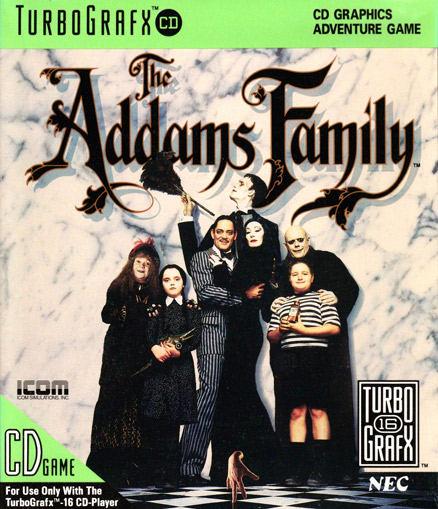 | The Addams Family: Do you remember that so-so cartoony platformer starring Gomez Addams with confusing level design that left you unsure of where to go? It wasn't so bad. You got a feel for the Addams' uniquely spooky estate and could spot all your favorite characters. Plus, Gomez is pretty much the coolest. RIP Raul Julia and such. Still, what if, instead of the Addams patriarch, you got to play Dan Hedaya's slimy lawyer character from the first movie, helping him hurt and cheat everyone's favorite kooky non-circular newsprint family? The Addams Family TGCD game is one of many really quite dire US-exclusive side-scrolling platformers for the system from ICOM Simulations, which had at one point been renowned for their early graphic adventure games Shadowgate, Deja Vu and Uninvited. No idea what happened to them. |
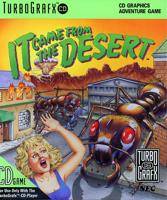 | It Came From The Desert: A comedic adventure game based on 50s B-movies (in particular, the giant ants movie Them) by the other US developer to really invest heavily in the TGCD and its new technology: Cinemaware. Cinemaware's whole shtick was, true to their name, games that felt more cinematic, long before that term became a dirty word in game design and critique circles. ICFTD (originally an Amiga game) is quite innovative for the time, with decisions that have consequences, scheduled events requiring the player keep an eye on the clock and strategic and action gameplay along with the usual inventory puzzle-solving. |
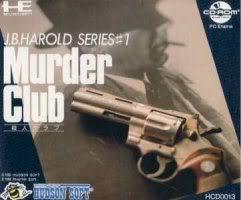 | J.B. Harold Murder Club (PCE: J.B. Harold Satsujin Club): The J.B. Harold Murder Club is a prolific franchise of murder whodunit adventure games of the sort that the Japanese were very fond of making back in the late 80s and early 90s. Rika Suzuki, its writer and director, would go on to create the beloved Hotel Dusk series for CING. It's another case of a pre-existing game with a proverbial fresh coat of paint for its CD incarnation, with additional cutscenes and music. (PC Engine Release: 11/23/90.) |
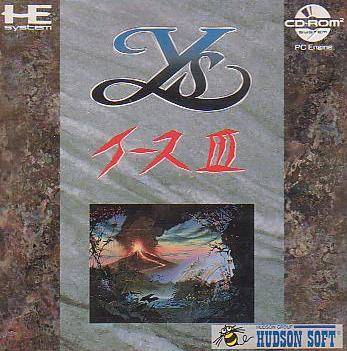 | Ys III: Wanderers From Ys: Ys III is perhaps best enjoyed these days as Ys: Oath in Felghana for Steam and PSP. Even so, the TGCD version isn't bad, on par with the SNES version for production values but for the new music. (PC Engine Release: 03/22/91.) |
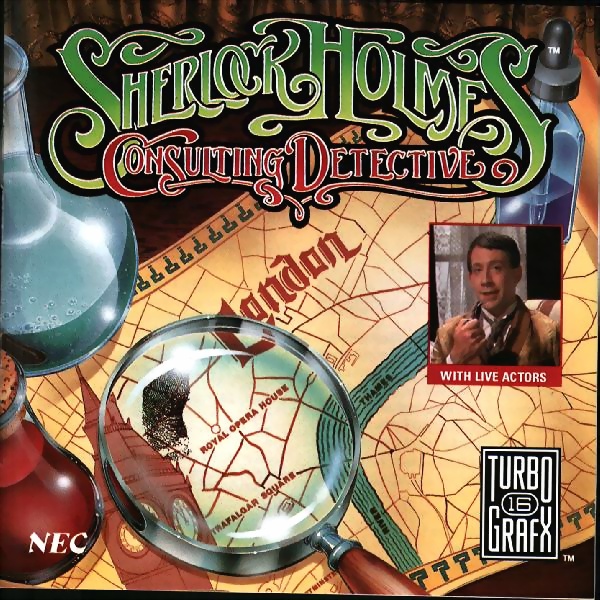 | Sherlock Holmes: Consulting Detective (PCE: Sherlock Holmes no Tantei Kouza) : One of the first truly FMV-focused games, Consulting Detective gives the player three cases to sort out, travelling across London to talk to actors in Victorian/Edwardian costumes in tiny, scratchy FMV boxes. The goal is to learn all you can and then deduce who the culprit is and how they did it with a constantly updating journal of clues. Most folk played the CD-ROM version for PC, but this one seems just as functional, if a little more awkward to use a mouse cursor with a D-pad. (PC Engine Release: 07/26/91.) |
1992
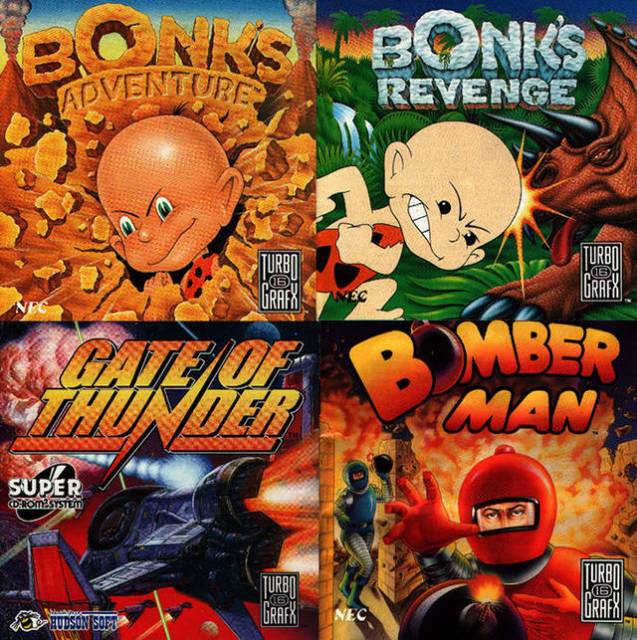 | 4 in 1 Super CD: Simply a pack-in compilation for the TurboDuo (a late-era TurboGrafx-16 console with a built-in CD drive and an upgraded RAM) that includes Bonk's Adventure, Bonk's Revenge, Gate of Thunder and Bomberman. For whatever reason, Bomberman needs a secret string of inputs on the game select before you could play it. Bomberman and the Bonk games are otherwise identical to their HuCard equivalents, but Gate of Thunder's an interesting case: The predecessor to a fantastic game that I'll cover a little later, Gate of Thunder is an equally badass side-scrolling shoot 'em up that was only available in the US via this compilation. It'll be coming up on this list again towards the end. |
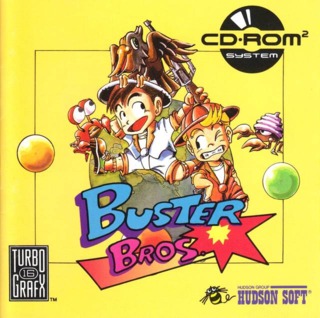 | Buster Bros. (PCE: Pomping World): Pang, or Buster Bros., is a Capcom Arcade game that briefly enraptured Arcade fans, shortly before that arena would be taken over by brawlers, fighters, light-gun shooters and DDR machines forever. The goal is to simply run left or right popping large bouncing bubbles, but the frantic nature of constantly evading deadly spheres and picking one's time to shoot made it a classic. Pang was released on almost every system imaginable in the early 90s, and the TGCD was no exception. (PC Engine Release: 05/31/91.) |
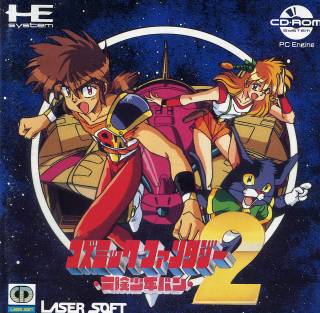 | Cosmic Fantasy 2 (PCE: Cosmic Fantasy 2: Bouken Shounen Ban): Another Laser Soft joint, Cosmic Fantasy is a long-running RPG franchise that combines fantasy and sci-fi in a manner similar to, say, Tri-Ace's Star Ocean or Sega's Phantasy Star. Very familiar fantasy RPG mechanics that eventually give way to a weird sci-fi tangent for the story. Cosmic Fantasy 2 is remarkable for having enemies with zero tactics: all they do is hit you with physical attacks over and over. This doesn't necessarily make the game any easier, however. Possibly due to the series's trademark licentious anime cutscenes, this is the only Cosmic Fantasy to see a localization. From Working Designs, no less, a localization team best known for PS1 games like Alundra and Lunar: Silver Star Story Complete and one of the very few third-party US TGCD publishers. Covered in Octurbo-CD. (PC Engine Release: 04/05/91.) |
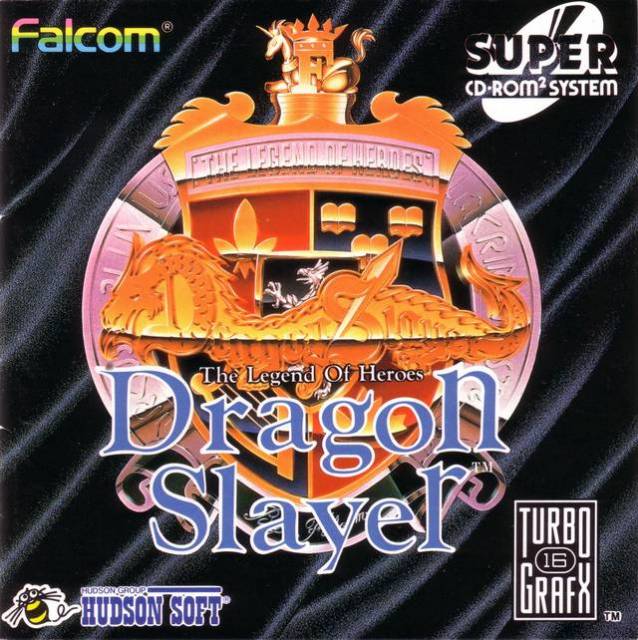 | Dragon Slayer: The Legend of Heroes (PCE: Dragon Slayer: Eiyuu Densetsu): The Legend of Heroes: Trails in the Sky is rightfully getting its dues with its recent Steam debut, but the series has been around since the late 80s. Later games would spin-off of Falcom's Dragon Slayer series, which also spawned (Fa)Xanadu and Legacy of the Wizard, but the first Legend of Heroes was part of that instrumental series. It's your standard turn-based Dragon Quest ersatz, but it's left quite a legacy. (PC Engine Release: 10/25/91.) |
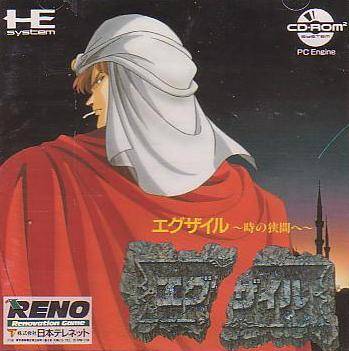 | Exile (PCE: Exile: Toki no Hazama e): More Laser Soft shenanigans and one of the most odd series on the platform. Exile tells the story of a time-travelling Muslin assassin who removes certain demonically powered figures from the Crusades era and beyond. It sounds a bit like Assassin's Creed, but is far less predictable. It does the ActRaiser thing of switching between top-down sections and side-scrolling action stages. Working Designs also localized this one for the West, and must've had a hell of a job trying to make sense of that plot. Covered in Octurbo-CD. (PC Engine Release: 03/29/91.) |
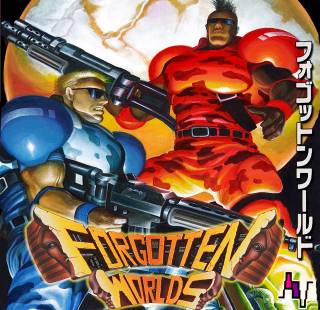 | Forgotten Worlds: Capcom's rotating shoot 'em up got a lot of exposure back in the early 90s, as Capcom were in the habit of giving other publishers the opportunity to produce both console and computer versions of their games in multiple regions. It's probably best known for its shades-wearing dudebro heroes that are more than a little reminiscent of Duke Nukem. (PC Engine Release: 03/27/92.) |
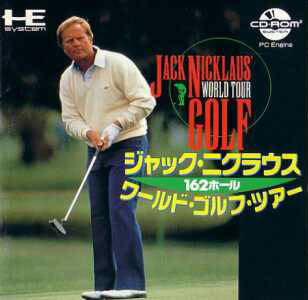 | Jack Nicklaus Turbo Golf (PCE: Jack Nicklaus' World Golf Tour): A golf game, and in fact the only golf game to hit the TurboGrafx-CD (though there were plenty of PC Engine CD golf sims). There were actually very few sports games in general for the system for whatever reason; perhaps developers didn't feel like the genre would be at all enhanced by anime cutscenes and redbook audio. Jack Nicklaus Turbo Golf was actually made available in both CD and regular HuCard formats, so I wouldn't expect too many CD features. (PC Engine Release: 09/14/90.) |
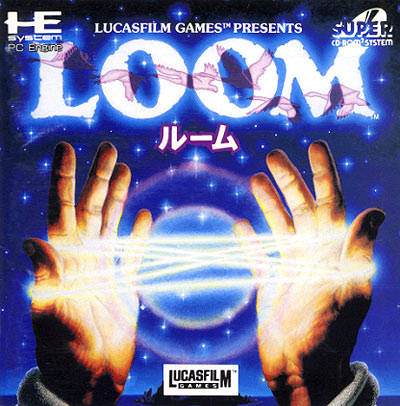 | Loom: A LucasArts graphic adventure game is an unusual sight when plumbing a video game console's library. Then again, this early SCUMM adventure game with puzzles revolving around music is perhaps one of the less command-intensive games in their oeuvre, making it a prime candidate for a system capable of redbook audio but no mouse support (at least in the West). Hey, ask me about Loom. (PC Engine Release: 09/25/92.) |
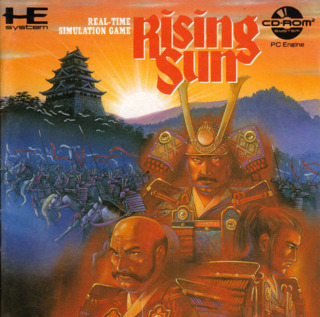 | Lords of the Rising Sun (PCE: Rising Sun): Though it looks like a KoeiNobunaga's Ambition clone, Lords of the Rising Sun was actually the product of Cinemaware, who had created a similar blend of strategy sim and action mini-games for their more famous game Defender of the Crown. Moving the action from medieval England to medieval Japan (the game is set during the Genpei War of the 12th century, rather than the usual Warring States/Sengoku period of the 16th century) probably didn't change as much as you'd expect. (PC Engine Release: 03/13/92.) |
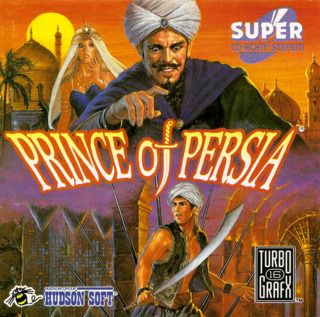 | Prince of Persia: Jordan Mechner's acrobatic Arabian leaped, dropped and rolled through many different ports and adaptations since its 1989 debut for the Apple-II, impressing many with its smooth rotoscoped animations and a strict time limit that demanded technical precision from the player (though a certain degree of cautiousness as well). Though this is its first CD incarnation, it doesn't really do a whole lot new. (PC Engine Release: 11/08/91.) |
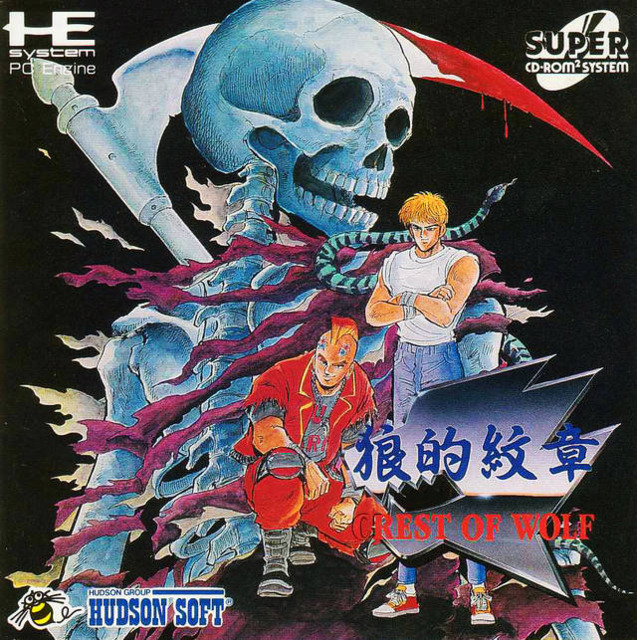 | Riot Zone (PCE: Crest of Wolf): A suspiciously familiar brawler set in a city rampant with crime, where a blond hero vigilante in a white shirt and jeans has to fight through dozens of colorful criminals with goofy names to rescue his girlfriend from the local crimelord. This is another Westone Arcade game that gave Hudson the usual license issues to overcome when it came time to adapt it for the TurboGrafx-CD. Covered in Octurbo-CD. (PC Engine Release: 02/26/93.) |
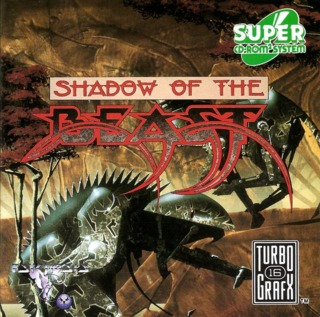 | Shadow of the Beast (PCE: Shadow of the Beast: Mashou no Okite): Let me be clear here, as I was the last time we covered the TurboGrafx: the system never came out in Europe. We didn't even know it existed, seeing how the internet wasn't yet a thing. So to find out that the very British Shadow of the Beast, a one-time big deal for the Amiga platform developed by Psygnosis, is also a TGCD game is kind of disconcerting. Though it looks and sounds amazing for a game from this era, it's actually pretty confusing and bad. (PC Engine Release: 03/27/92.) |
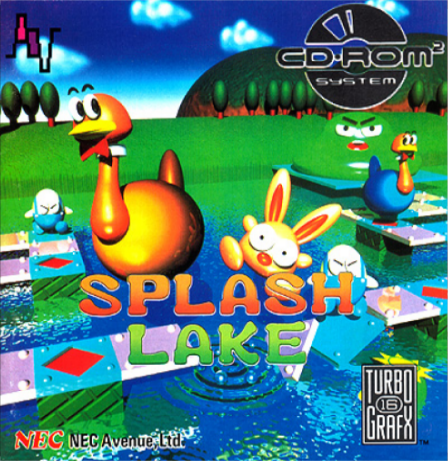 | Splash Lake: A game in which you peck away at the ground to drop both landmasses and the monsters standing on them into the ocean. In that respect, it's not too dissimilar to Dig Dug 2, or Bombuzal. Like those games, due care must be taken so you don't accidentally drop yourself into the drink instead. (PC Engine Release: 06/28/91.) |
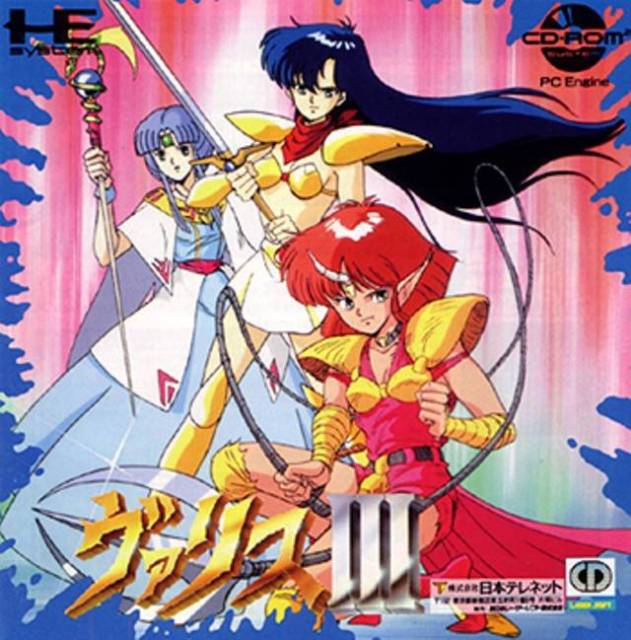 | Valis III: The sequel to Valis continues the story of the second game and the series's main character Yuko is joined two other would-be heroes to add a bit of variety. The anime cutscenes and localization (again, by Working Designs) is pretty high quality for the era. If only the same could be said about the average side-scrolling brawler gameplay. (PC Engine Release: 09/07/90.) |
1993
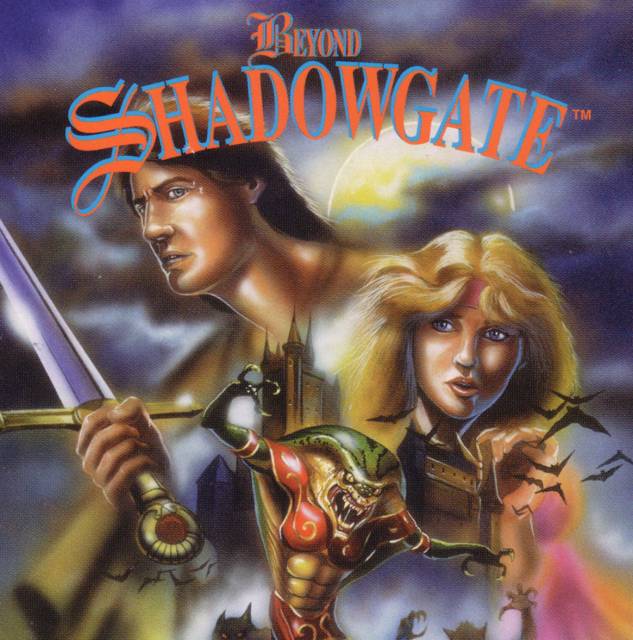 | Beyond Shadowgate: ICOM actually looked back to their better days when choosing to develop this sequel to Shadowgate. While it still has adventure game trappings, with lots of going back and forth for items and getting killed instantly by pressing weird buttons, the game also has a bit of an side-scrolling action game bent. The player can swordfight guards and other humanoids while progressing through the deathtrap-filled regions of the eponymous locale. Covered in Octurbo-CD. |
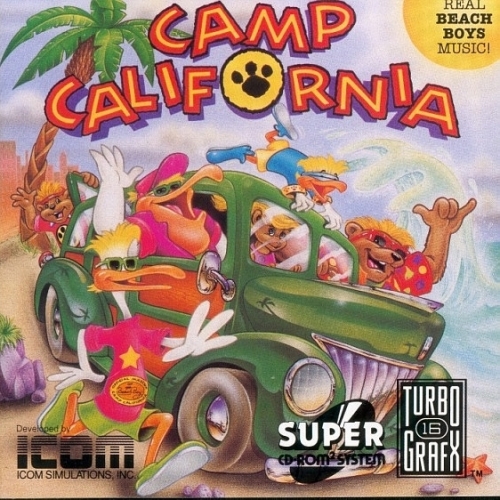 | Camp California: Another ICOM game and a pseudo sequel to Yo' Bro. It's a far more standard side-scrolling platformer with multiple protagonists with different skills (think something like Bucky O' Hare for the NES, or Castlevania III). It didn't seem too bad, honestly, though fair warning if you don't care for the music of the Beach Boys. At least they're not MIDIs any more. |
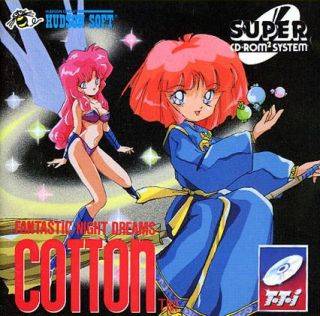 | Fantastic Night Dreams: Cotton: A cutesy witch shoot 'em up that begat a pretty long series of interesting games, including one where you were heading into the screen like in Star Fox. The game does have an irresponsible message regarding candy addiction though. Covered in Octurbo-CD. (PC Engine Release: 02/12/93.) |
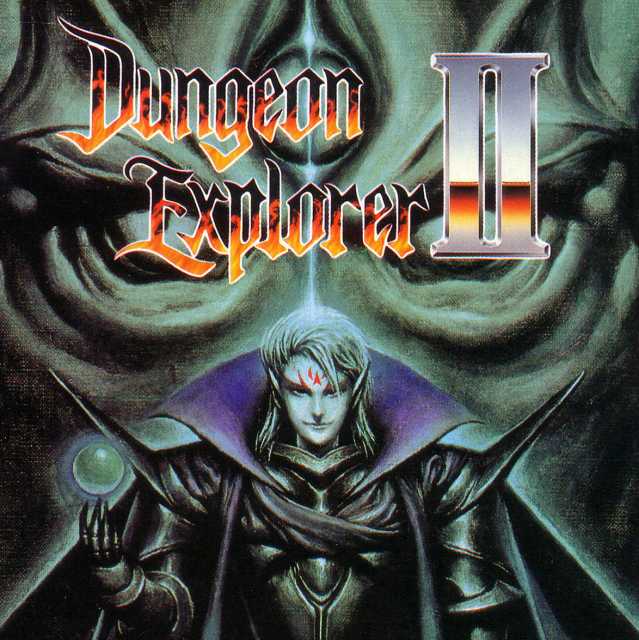 | Dungeon Explorer II: Very much a case of "second verse, same as the first", though it's been polished a lot since those early days with Judas and NATAS. It's Gauntlet combined with an RPG, and one of the few 16-bit RPGs to support multiple players. Covered in Octurbo-CD. (PC Engine Release: 03/26/93.) |
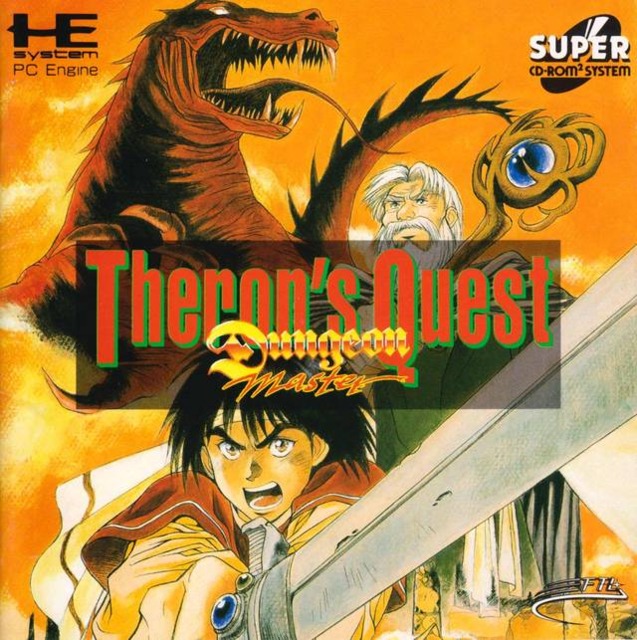 | Dungeon Master: Theron's Quest: I really should get back to this some day. I grew up with games like the Atari ST/Amiga dungeon-crawling classic Dungeon Master, and it led to a life-long adoration of western computer RPGs. Theron's Quest slices up the original game's singular dungeon, creating multiple scenarios with different monsters and recruitable champions where the only constant is Theron himself. It's an odd take on the game, but not a disagreeable one. Covered in Octurbo-CD. (PC Engine Release: 09/18/92.) |
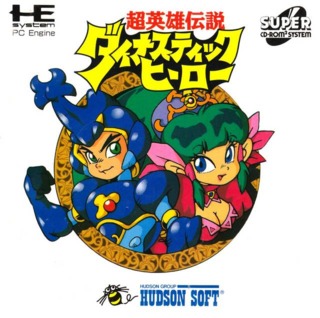 | The Dynastic Hero (PCE: Chou Eiyuu Densetsu: Dynastic Hero): The Dynastic Hero is actually just Wonder Boy in Monster World, once again undergoing a weird facelift to appease Wonder Boy license holders Sega. It's otherwise identical to the well-regarded Genesis action RPG, but for some anime cutscenes and a graphical overhaul. (PC Engine Release: 05/20/94.) |
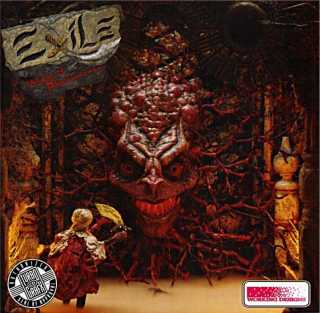 | Exile: Wicked Phenomenon (PCE: Exile: Janen no Jishou ): The sequel to Exile, and every bit as bonkers as the original. If I were to continue Octurbo, this is one of the first games I'd check out. The presence of Working Designs ensures another satisfactory localization of what is an extremely odd series. (PC Engine Release: 09/22/92.) |
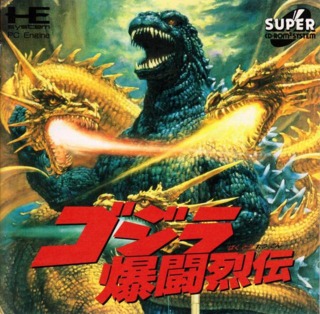 | Godzilla (PCE: Godzilla: Bakutou Retsuden): A two-player fighter game based on Godzilla and other Toho movie kaiju. As well as looking and sounding as close to the movies as possible, the game takes pains to ensure accuracy to its source material (very rare for licensed games, even now) and will even change Godzilla's sprite depending on his opponent so he'll match his appearance in that particular movie - if he's fighting MechaGodzilla, he'll look just as he did in 1974's Godzilla vs. MechaGodzilla. It's a great game for Godzilla fans, probably the best overall from this era. Covered in Octurbo-CD. (PC Engine Release: 02/26/94.) |
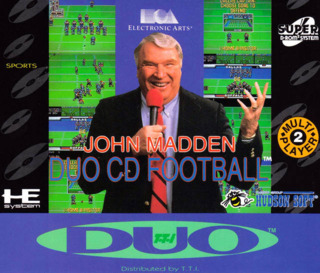 | John Madden Duo CD Football: While EA's happy to dump their flagship football series on any and all consoles that will take it, they didn't really bother with the TurboGrafx when the franchise was still in its infancy. Duo CD Football is the singular exception, an adaptation of Madden '93 (pre NFL license, even) with a bunch of goofy movie clips and sound samples thrown in. Ever wanted to see a real-life referee (in super grainy footage) flip a coin in a video game? Boom. |
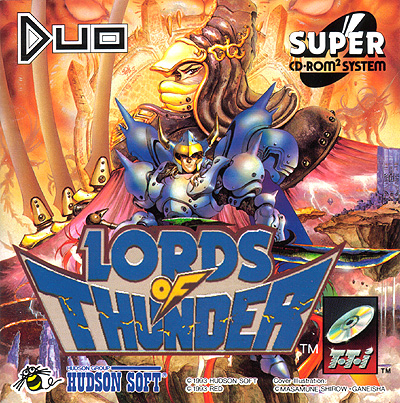 | Lords of Thunder (PCE: Winds of Thunder): One of the most legitimately badass games ever made, Lords of Thunder took the sci-fi trappings of the original and changed it to a fantasy world of demigod knights with winged armor and dragons covered with guns. The game's soundtrack is a heavy metal symphony of guitar riffs and bass lines that make the whole game feel like an elaborate rock opera, or the missing segment from Heavy Metal the animated movie. It's the sort of game premise Dan Ryckert would conceive if he wasn't allowed to mention alligators or pro wrestling. Covered in Octurbo-CD. (PC Engine Release: 04/23/93.) |
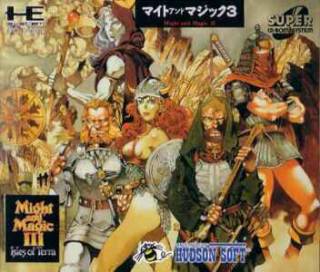 | Might and Magic III: Isles of Terra: Might and Magic is a venerable dungeon crawling series that began around the same time Ultima did, and continues to plod along to this day with reboots and spin-offs. No-one really mentions just how off the damn chain the early Might and Magic games were, freely mixing standard fantasy RPG action with sci-fi weirdness. This game, for instance, takes place on a giant, ancient interstellar "seed ship" that has been taken over by an evil God en route to its new home in the stars. The most notable thing about the TGCD version in particular is its truly unsettling experimental synth soundtrack. Covered in Octurbo-CD. (PC Engine Release: 10/29/93.) |
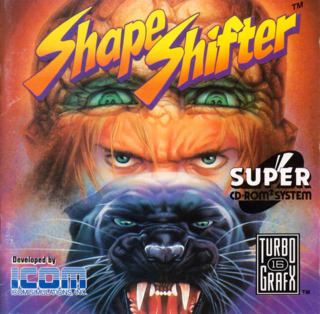 | Shape Shifter (PCE: Shapeshifter: Makai Eiyuuden): Another ICOM platformer and one that actually has a bit of promise, for once. The game resembles Castlevania II with its hub town and minimal RPG elements, but is far more like The Legendary Axe in execution. Your barbarian hero must traipse across the land searching for five magical rings, and each gives him a new form that expands his abilities and opens new areas for exploration. (PC Engine Release: 09/25/92.) |
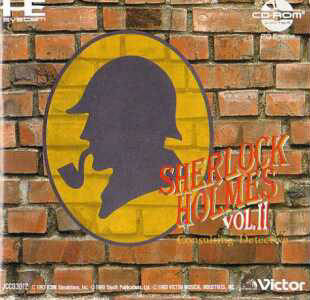 | Sherlock Holmes Consulting Detective Volume 2 (PCE: Sherlock Holmes no Tantei Kouza 2): The sequel to the first Sherlock Holmes Consulting Detective, and similarly presents three cases for Sherlock to solve with the player's help. More FMV with various extras in period costumes, more obsessive note taking and more dastardly cads to foil. While there was a third one of these, it remained a PC exclusive. (PC Engine Release: 05/28/93.) |
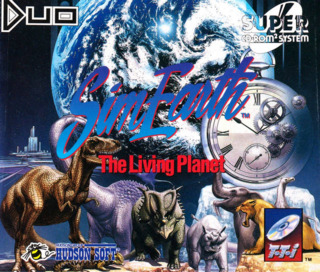 | SimEarth: The Living Planet: Ohh, Maxis. SimEarth wasn't really the best game they put out while at their Sim peak, but SimEarth's still a very heady strategy game that puts players in control of the entire planet before and after it begins to support life. It also seems like an absurdly complicated game for a console conversion. Too bad the TurboGrafx-CD never got its own version of SimCity 2000. (PC Engine Release: 01/14/93.) |
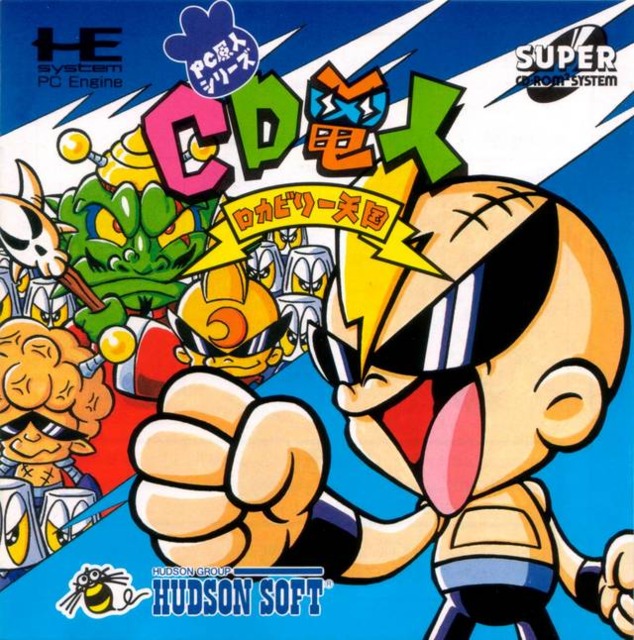 | Super Air Zonk: Rockabilly Paradise (PCE: CD Denjin: Rockabilly Tengoku): The sequel to Air Zonk and more madcap madness with a cybernetic Bonk. The game expands the assistant system of the previous game, in which Bonk would combine with his various friends to become a horrifying chimera. The game lives up to its subtitle, featuring a lot of rockabilly music. (PC Engine Release: 07/30/93.) |
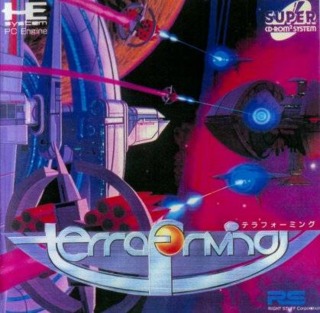 | Syd Mead's Terraforming (PCE: Terraforming): While the game's a standard side-scrolling shoot 'em up, the artwork of futurist concept artist Syd Mead certainly gives the game a pretty if very alien setting. Between Ballistix's Melvyn Grant, Shadow of the Beast's Roger Dean and Terraforming's Syd Mead, you can't say the TurboGrafx was hurting for games inspired by the work of unconventional artists. (PC Engine Release: 05/01/92.) |
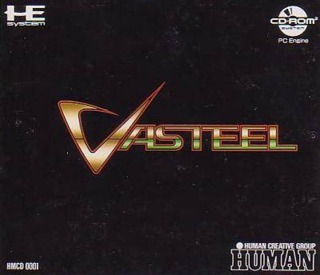 | Vasteel: Vasteel is a turn-based strategy game like Military Madness or Nintendo Wars, but instead of having choppers and infantry working alongside tanks, it's various types of mechs. What's more, the player themselves has to control their units whenever they meet an enemy on the field. If you're deploying quick, bipedal robots you'll probably find it easier than trying to direct a building-sized tank around. Working Designs published this one too, even though it's not their usual RPG fare. (PC Engine Release: 12/20/90.) |
1994
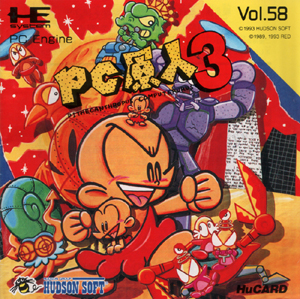 | Bonk 3: Bonk's Big Adventure CD: Bonk 3 doesn't add a whole lot to the Bonk formula, other than adding a growing/shrinking mechanic that played around with the level design. The series is decent enough that it doesn't really need any major tweaks from game to game either, of course. It's more notable for being one a handful of games to be released on both the HuCard and CD format, as well as the very last TurboGrafx-anything game to be released: the TurboDuo system had died on its ass by the time 1994 rolled around. Covered in Octurbo-CD. |
WiiWare (2007-2010)
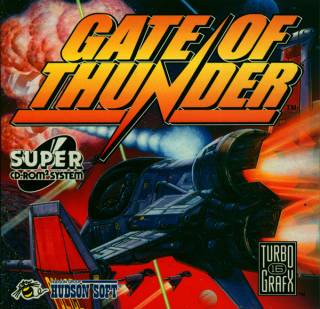 | Gate of Thunder: Though officially part of the 4 in 1 Super CD compilation, Gate of Thunder never actually saw a separate release for the system. It wasn't until 2008 when it was added to the Wii's Virtual Console that it became available as a standalone title. Like Lords of Thunder, its superior successor, Gate of Thunder does not skimp on the badass one bit. Whether it's long intros full of exploding space ships and Kojima-style cool guy introductions, or the rocking soundtrack, it very much taps into what made shoot 'em ups so much fun in the Arcades, even if you happened to be completely garbage at them (like me). (PC Engine Release: 02/21/92. US WiiWare Release: 10/15/07.) |
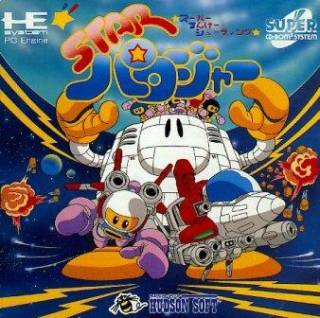 | Star Parodier: A shoot 'em up spin-off of Hudson's Star Soldier franchise that's far more focused on making a fool of itself. It's the Parodius of the Star Soldier games, but it probably isn't wacky enough to be considered a true peer to Konami's absurd 'em up. You do get to pilot a giant, sentient PC Engine though. Covered in Octurbo-CD. (PC Engine Release: 04/24/92. US WiiWare Release: 08/11/08.) |
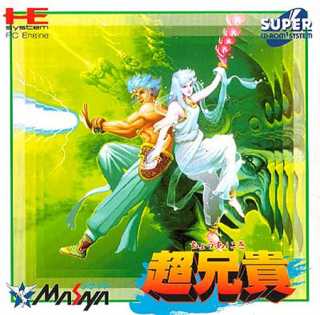 | Cho Aniki: Cho Aniki is legendary these days for its surreal musclemen antagonists and heaps of homoerotic overtones. It's less frequently talked about as a decent side-scrolling shoot 'em up full of surprises, but this (and its sequel Ai Cho Aniki) are actually pretty good. Unfortunately, the weirder the series got, the less fun they were to actually play. Covered in Octurbo-CD. (PC Engine Release: 12/25/92. US WiiWare Release: 09/08/08.) |
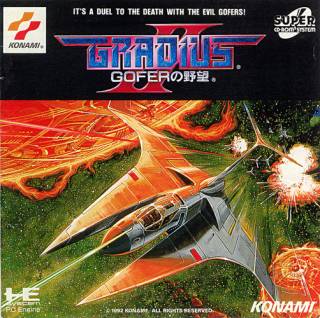 | Gradius II: Gofer no Yabou: Occasionally mistaken for Salamander (a.k.a. Life Force), which was more like "Gradius 1.5", Gradius II is a confident sequel to one of the most iconic shoot 'em ups ever made. It's also surprising to note that the US never saw hide nor hair of this "proper" sequel on any platform until years later, either through Konami compilations or this TGCD Virtual Console rerelease. (PC Engine Release: 12/18/92. US WiiWare Release: 10/20/08.) |
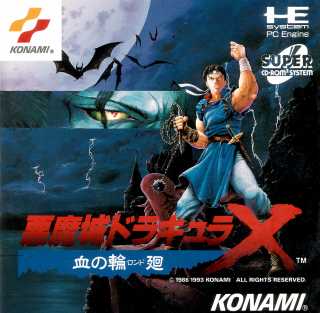 | Castlevania: Rondo of Blood (PCE: Akumajou Dracula X: Chi no Rondo): This game shouldn't need any introduction. After Castlevania III, Konami's wonderful ode to horror movies split three ways for the three separate 16-bit consoles that emerged: Super Nintendo got Super Castlevania IV, Genesis got Castlevania: Bloodlines and the TurboGrafx-CD got Rondo of Blood and arguably the best deal of the three. It's already a fantastic iteration of the pre-Igarashi, pre-Metroidvania classic Castlevania platformer, and greatly enhanced by a CD soundtrack of memorable Castlevania tunes and anime cutscenes. It's also the immediate predecessor to Symphony of the Night, as if it wasn't vital enough. It's a shame Konami made it so difficult for western gamers to get their hands on it until recently. Covered in Octurbo-CD. (PC Engine Release: 10/29/93. US WiiWare Release: 03/15/10.) |
That's it! I don't have to talk about the TurboGrafx ever again! Hooray! (However, stay tuned for more PC Engine coverage when I finally get around to it.) Thanks all.
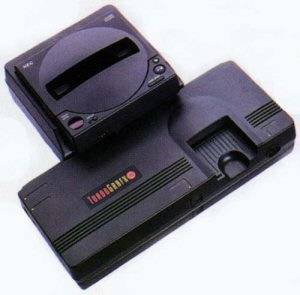
Log in to comment